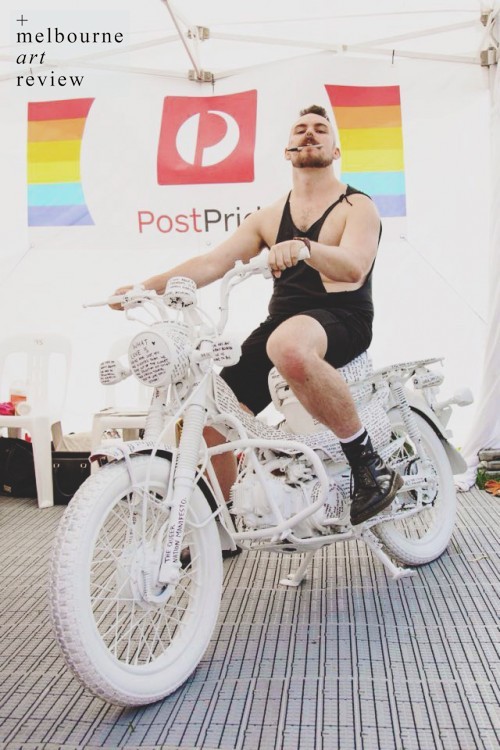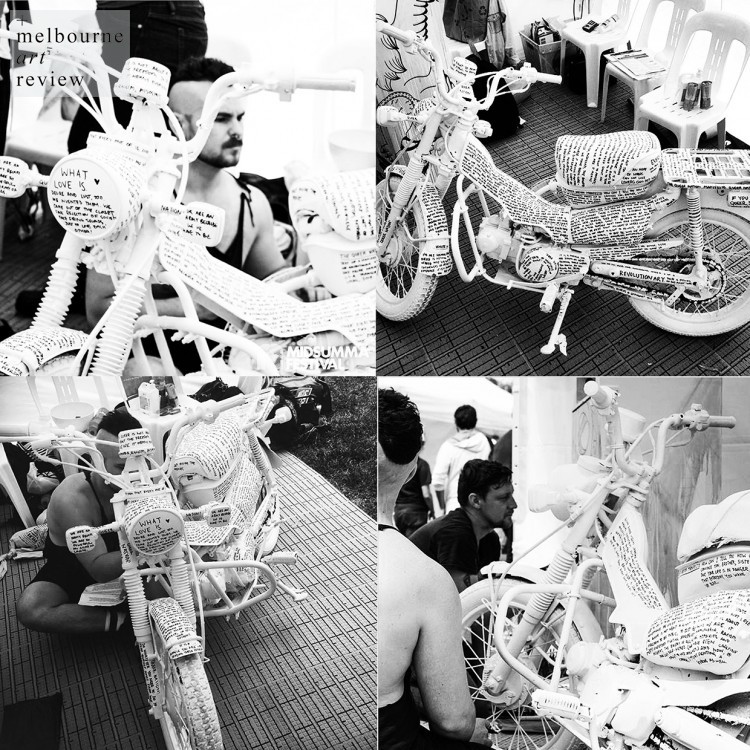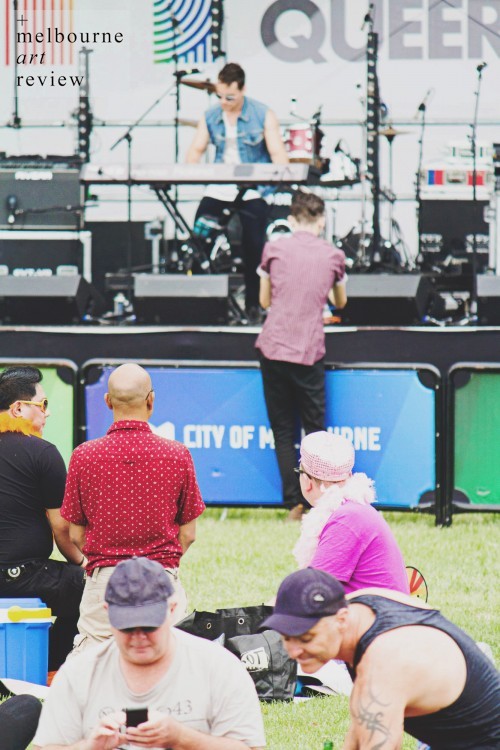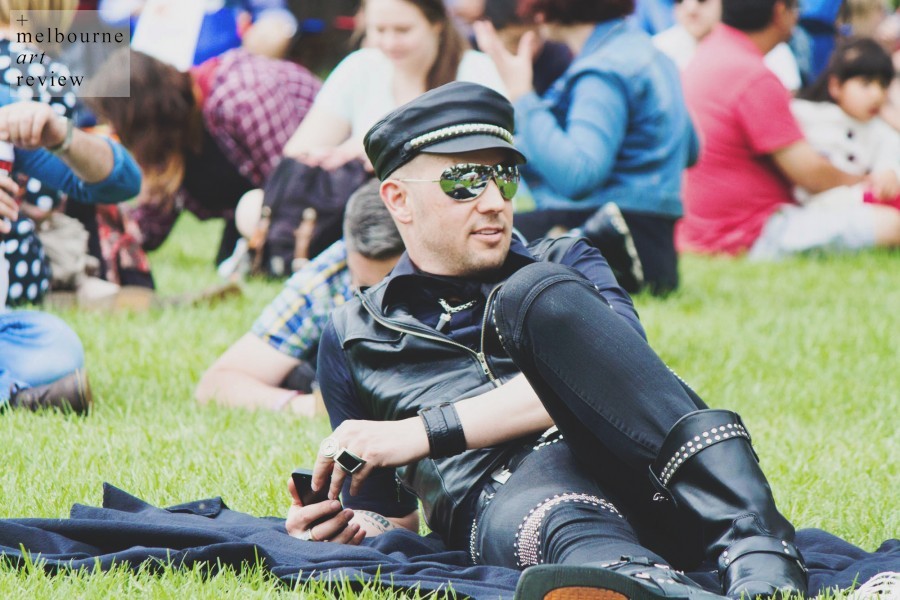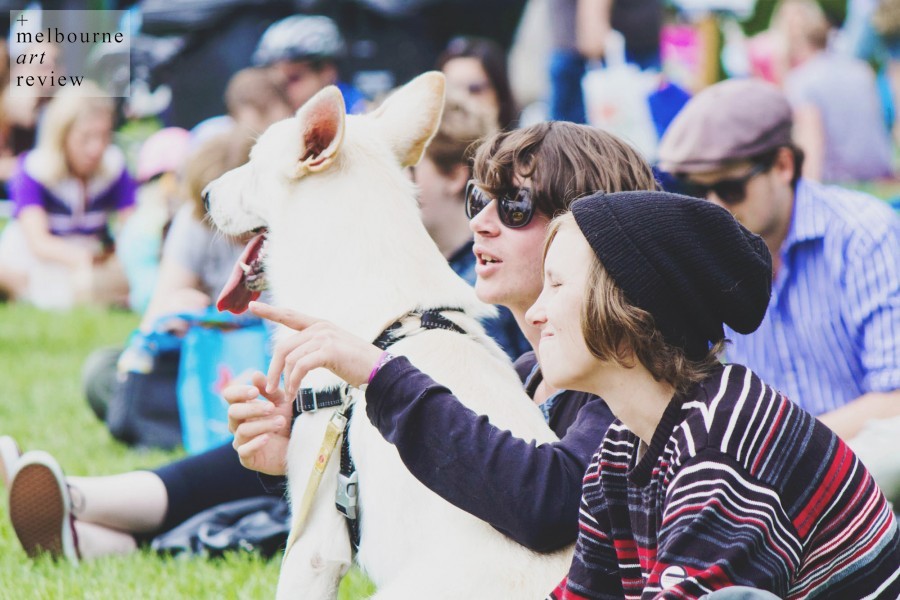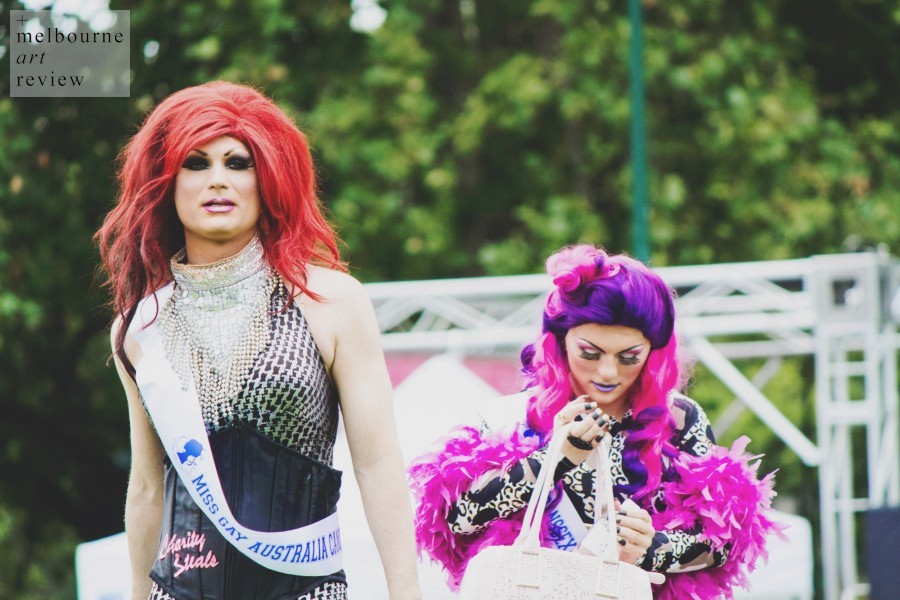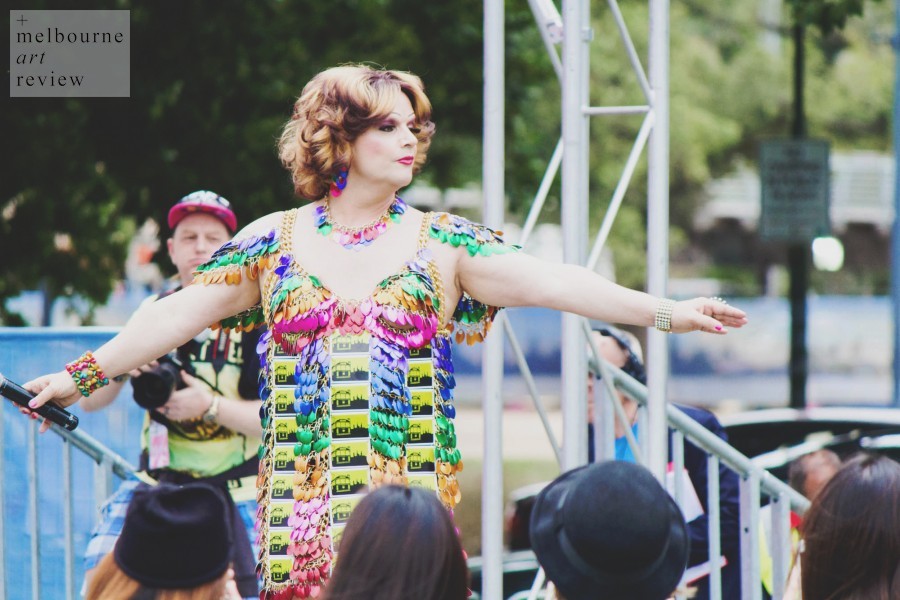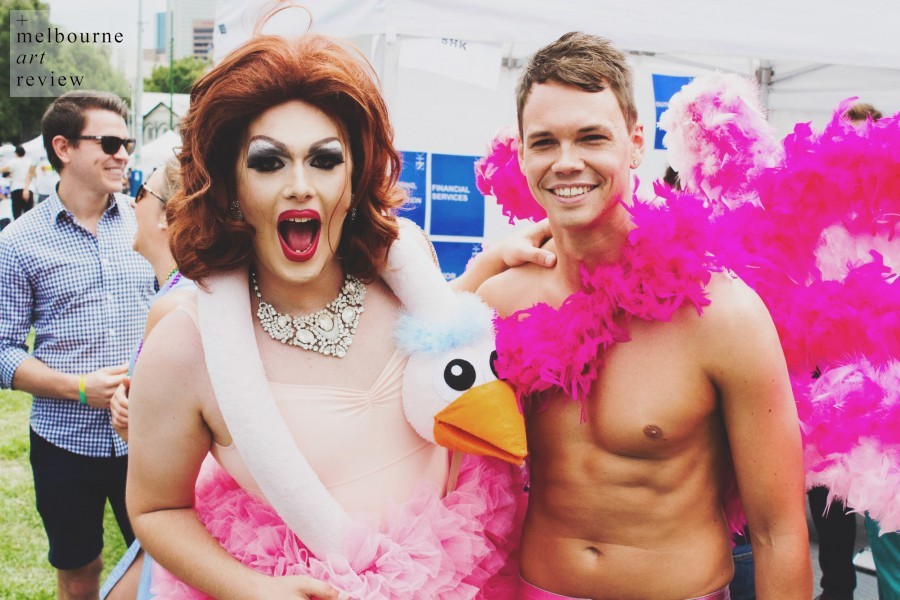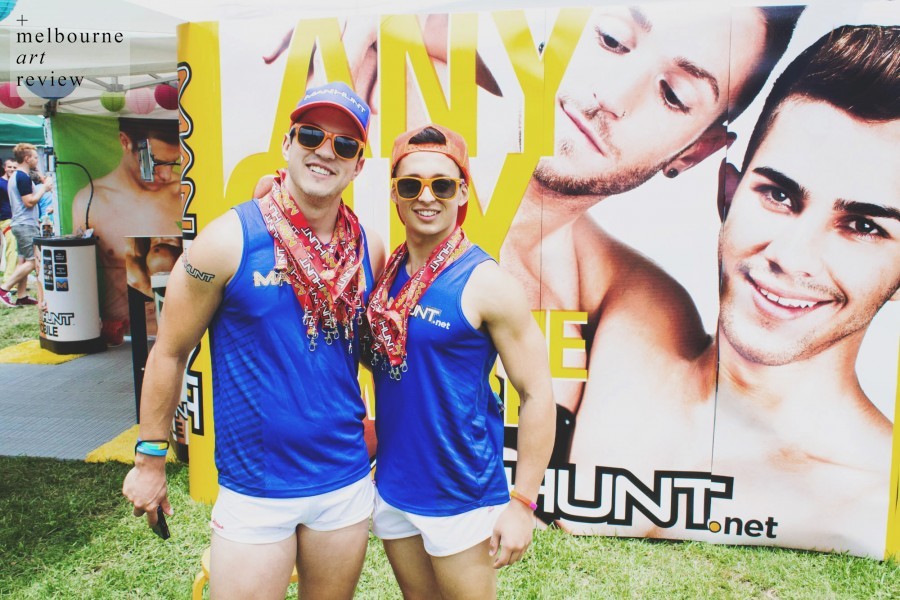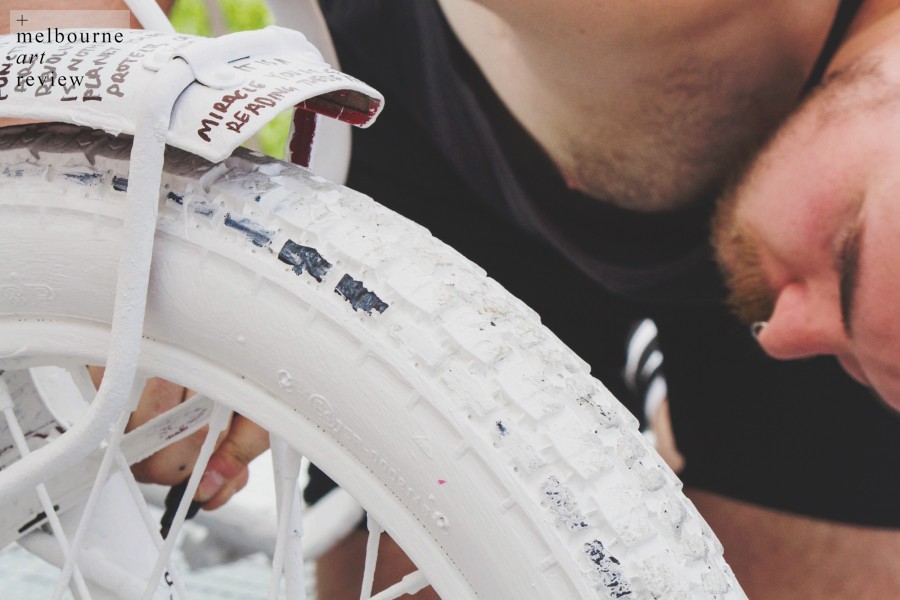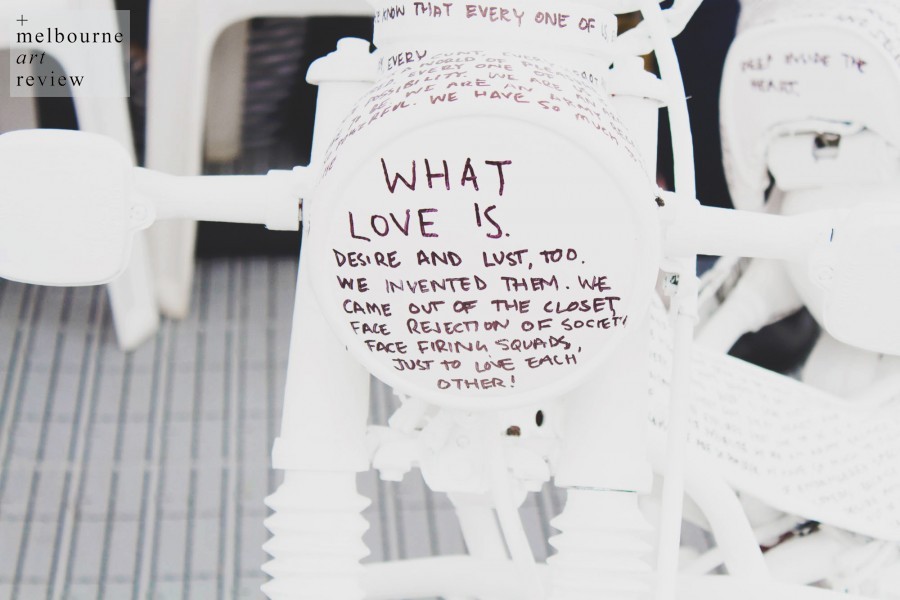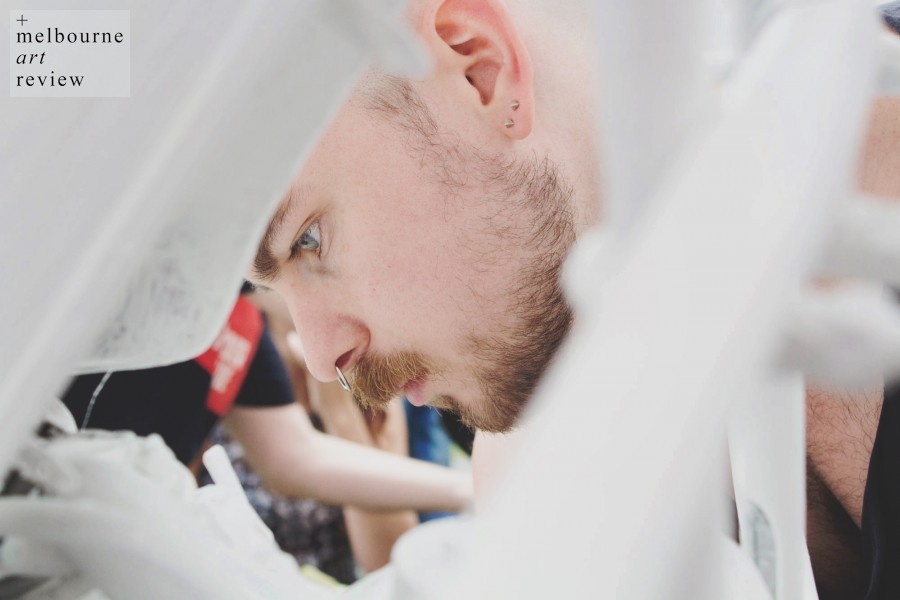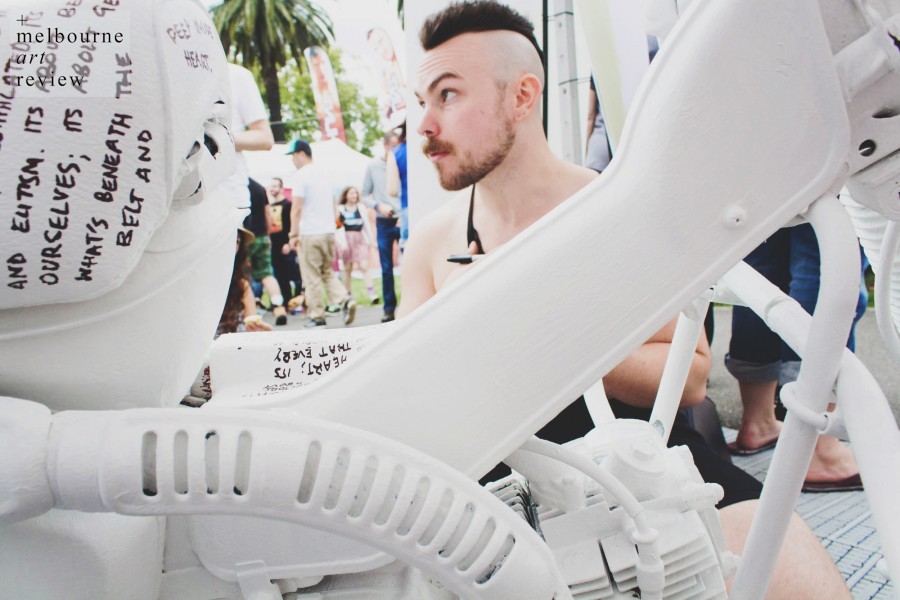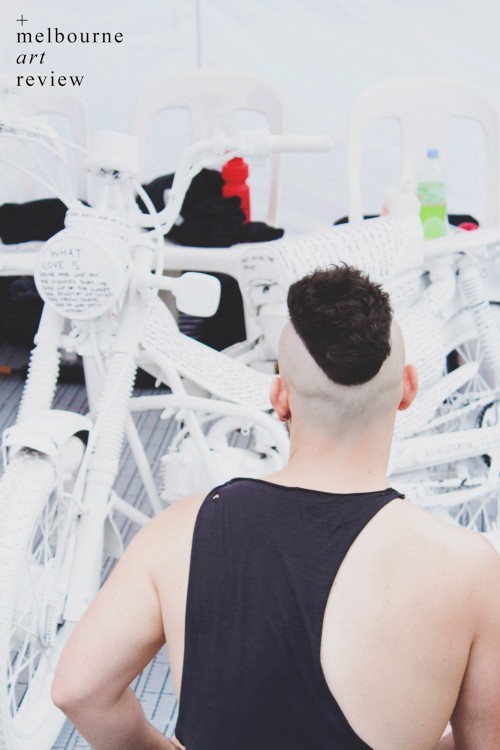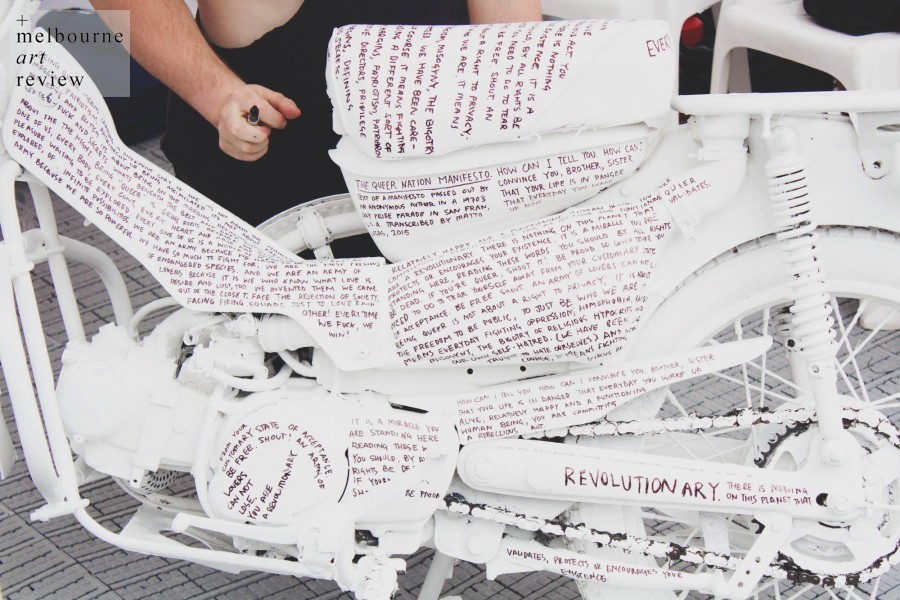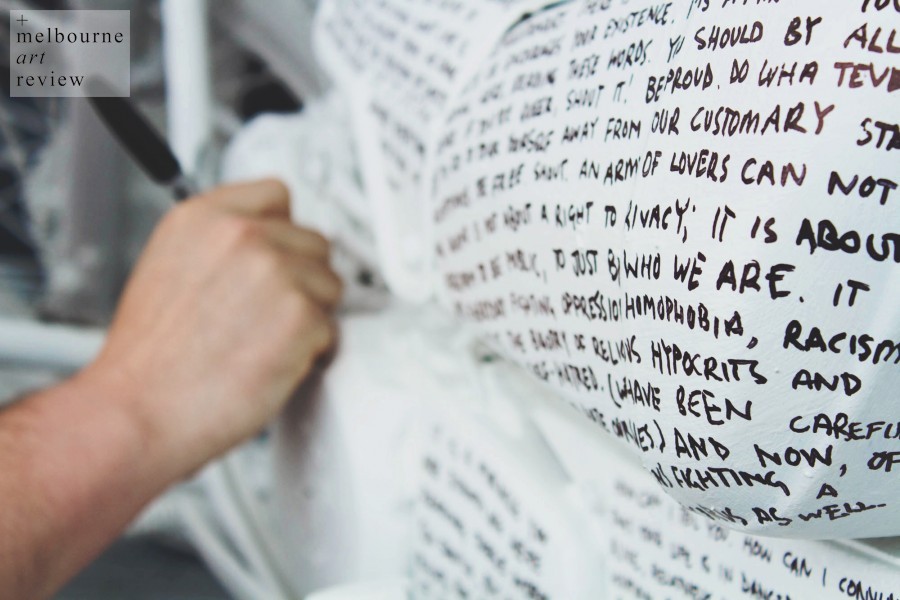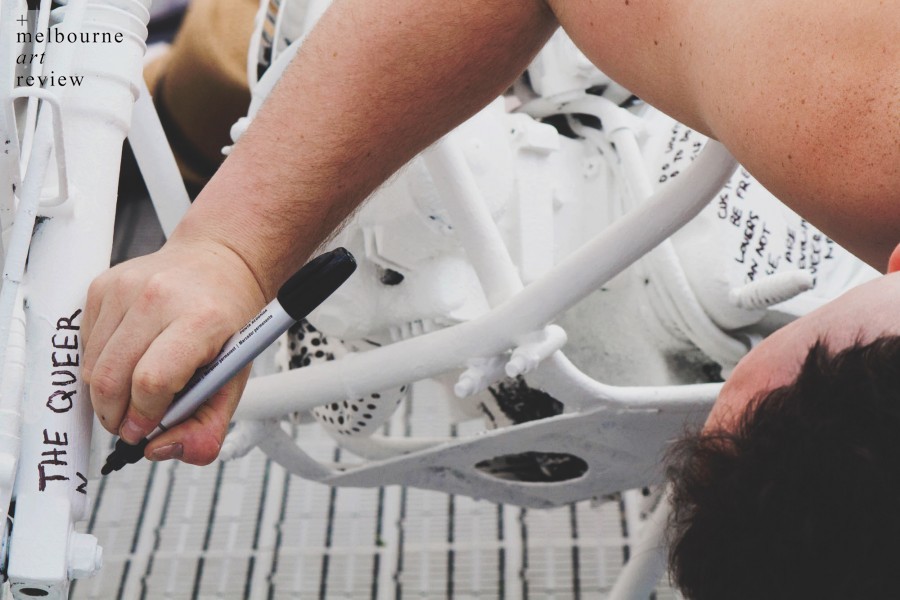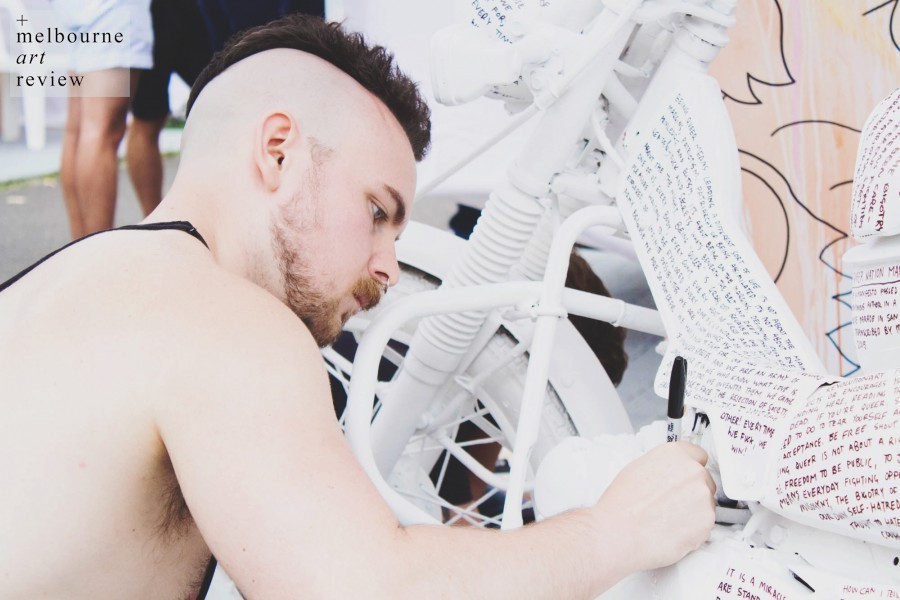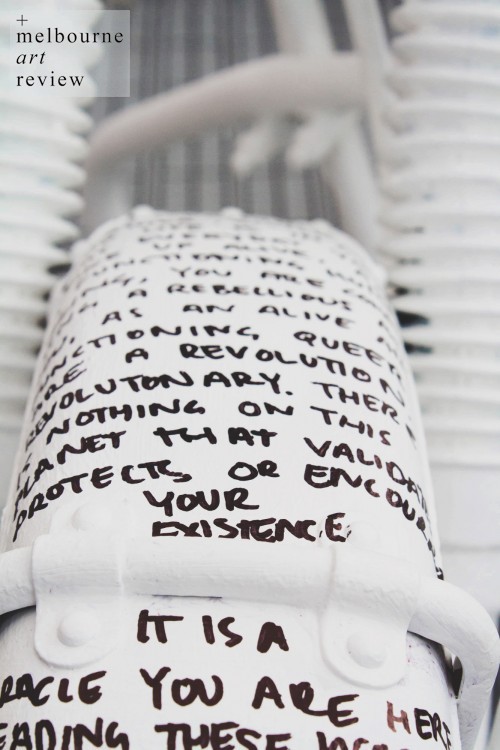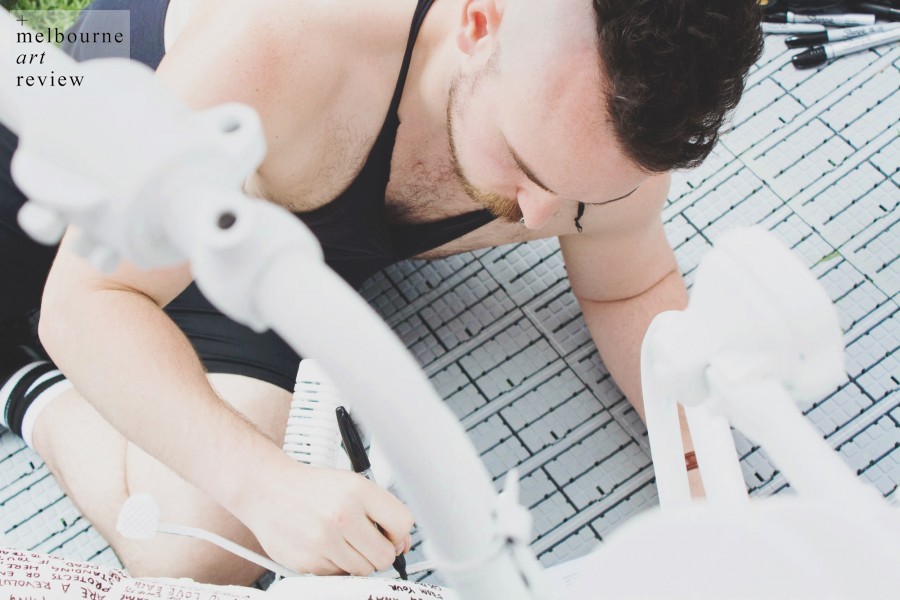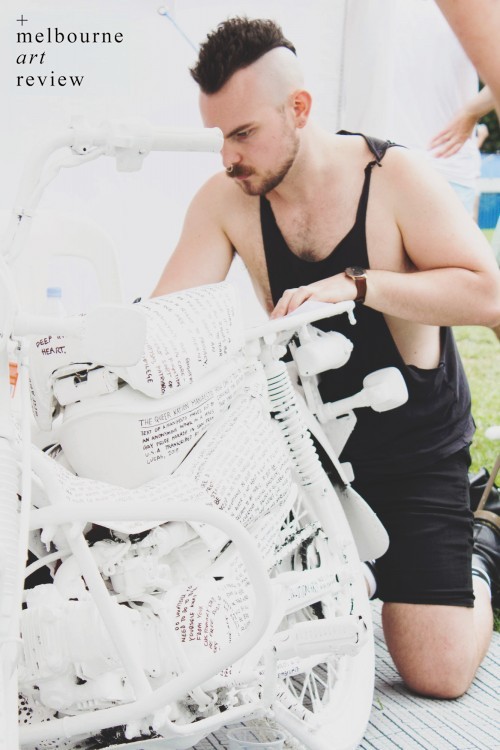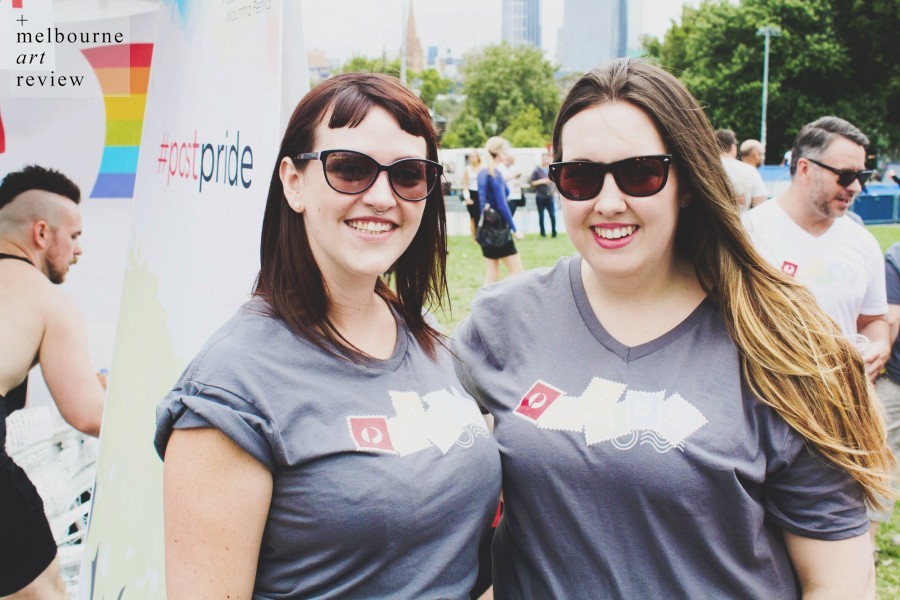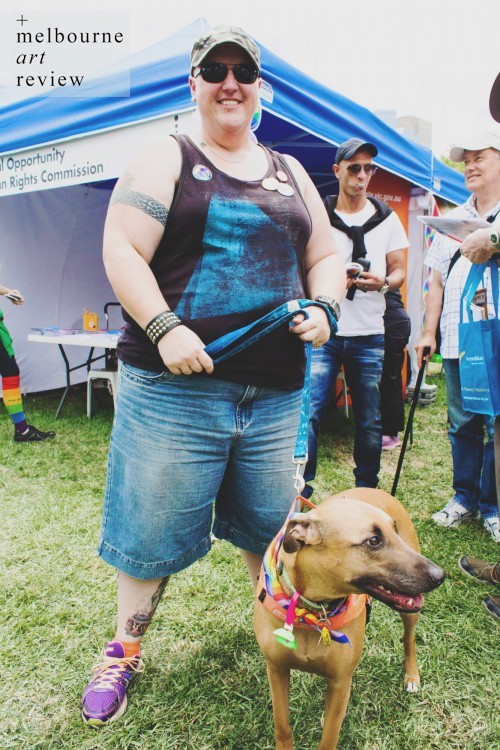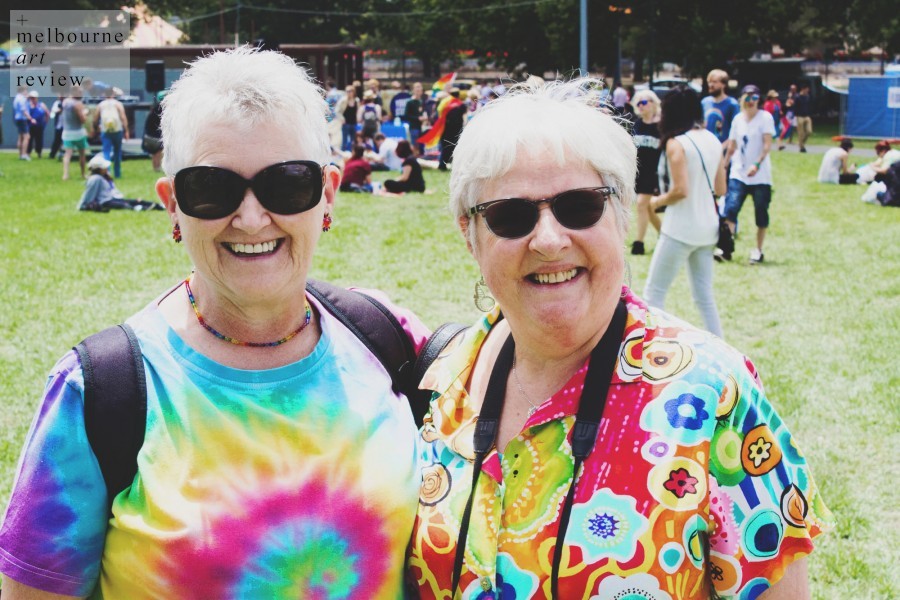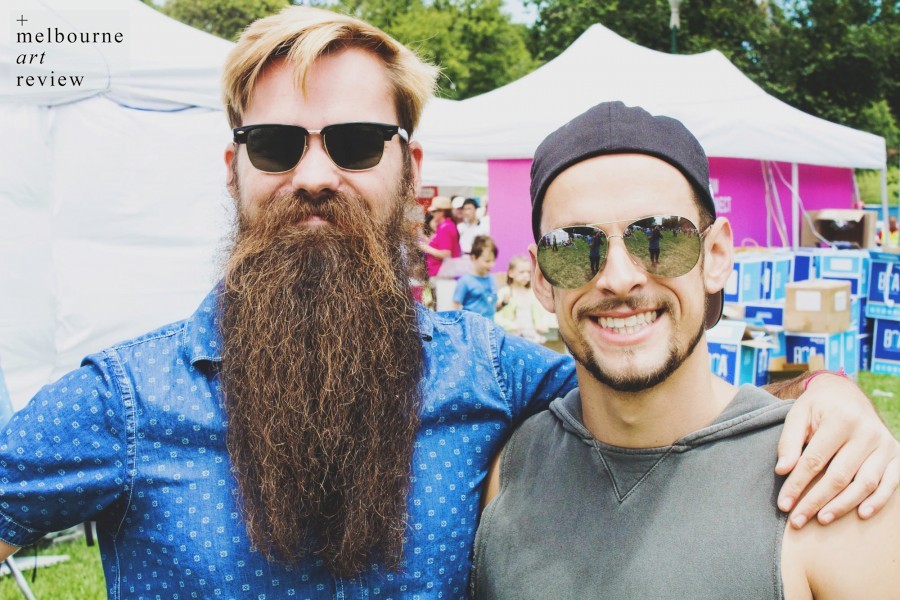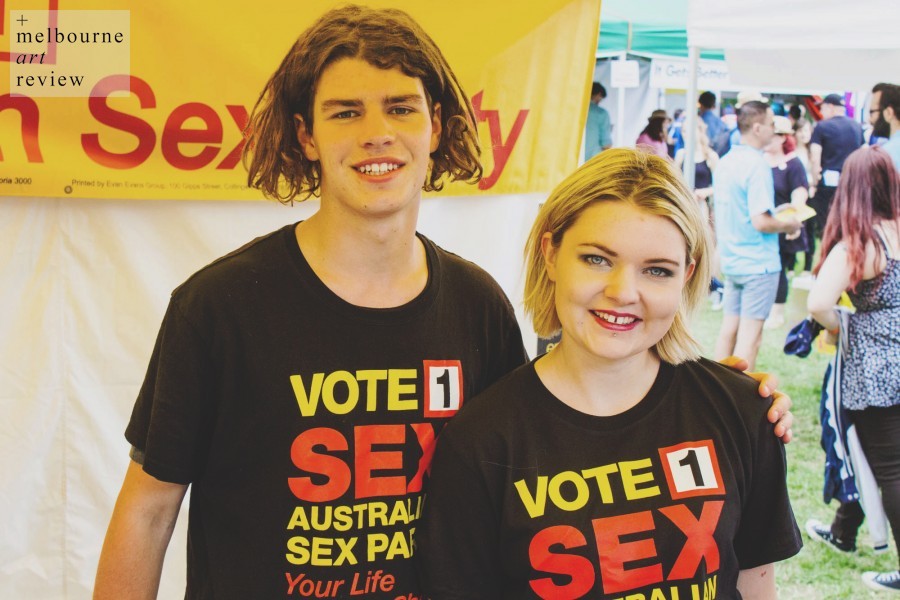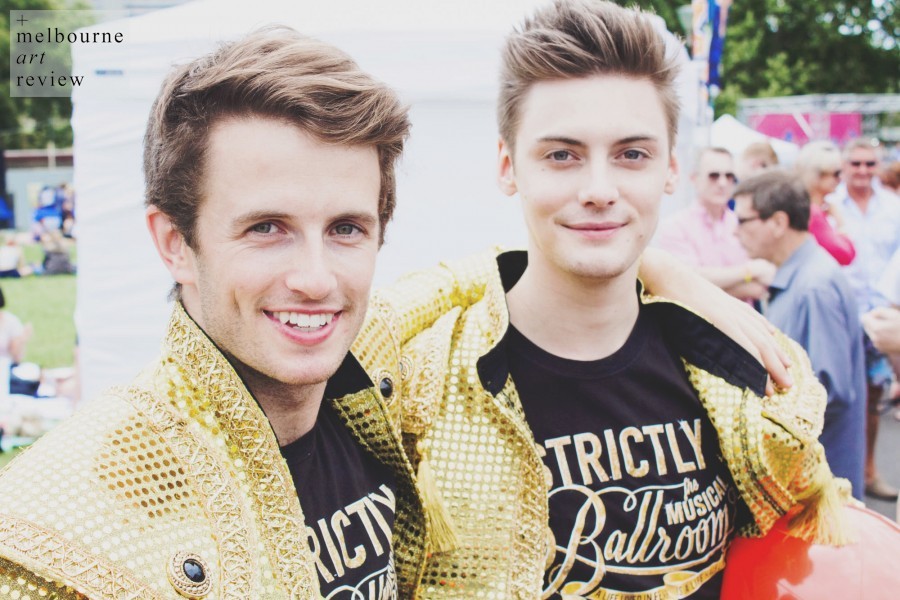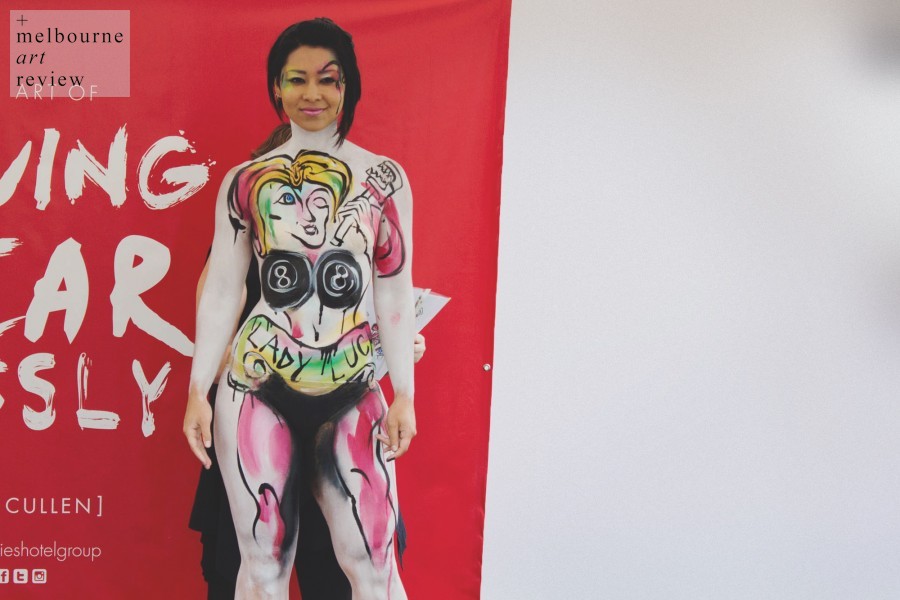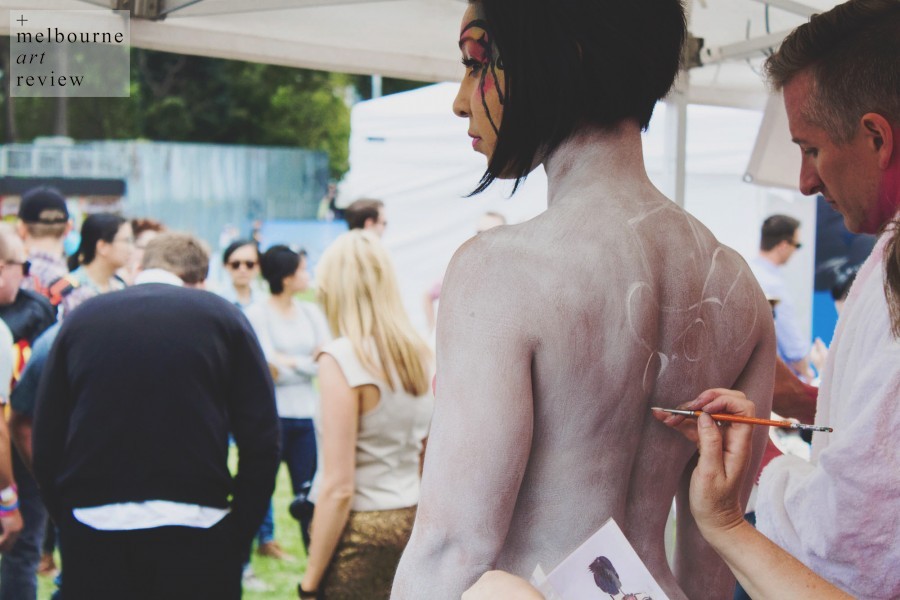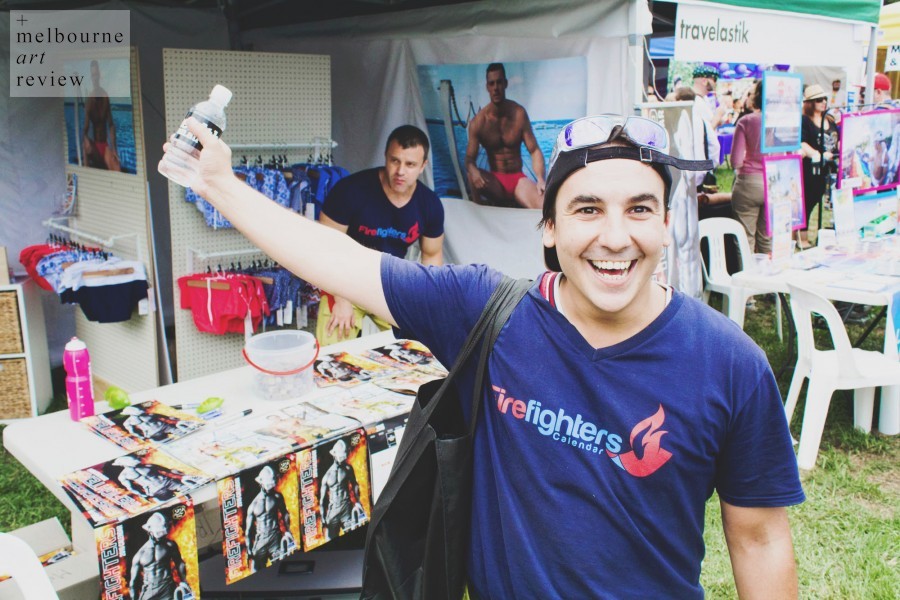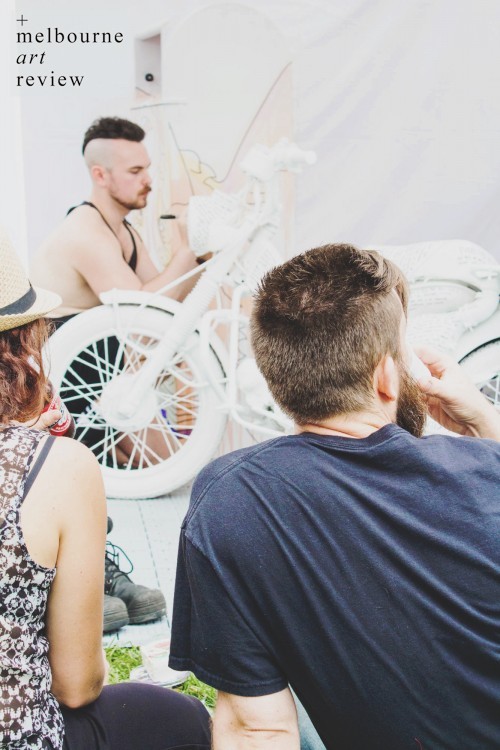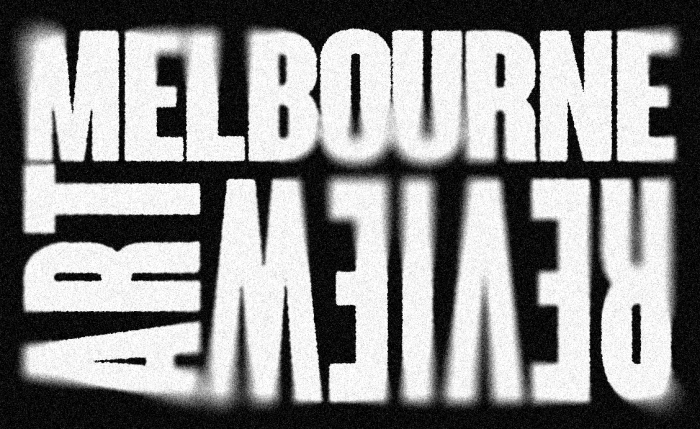Share this:
QUEER NATION | Matto Lucas commissioned by Australia Post for Midsumma 2015
20 January 2015 Comment
DIMAS, BENNY 2015
IF YOU’RE QUEER, SHOUT IT: OWNING AND (RE)INSCRIBING THE BODY IN MATTO LUCAS “QUEER NATION”
“Art is the last safe place for lesbians and gay men to thrive.” - The Queer Nation Manifesto
In “Queer Nation,” common themes within visual artist Matto Lucas’ body of work collide and intersect with both the anonymously authored 1990 document Queer Nation Manifesto, and the physical body and cultural connotations of the postal delivery motorbike upon which “Queer Nation” was created. Lucas was commissioned to create this work by Australia Post and Midsumma, and the piece was created in live performance at Midsumma Carnival on January 18, 2015.
1 MATTO LUCAS, ARTIST AND QUEER: “YOU AS AN ALIVE AND FUNCTIONING QUEER ARE A REVOLUTIONARY.”
Matto Lucas is an establishing visual artist working with photography, mixed media and digital media, with an ongoing engagement and focus on queer issues and commitment to the LGBTQI community. He self-describes his work as exploiting “the perception of truth and value,” of “questioning human worth” in order to “own space” – that “it exists” hence “I exist.” As a queer artist in a world still largely dominated by heteronormative constructs of perception, knowledge, and culture, the power of ownership of space and identity is a salient and recurrent thread within his work. Lucas’ body of work also frequently touches on issues surrounding the reconfiguring of the masculine body within queer contexts, and such issues are necessarily multilayered and complex.
Where traditional heteronormative social constructs of queer male bodies are quick to feminise physiology or personality in an attempt to misogynistically belittle gay men, or alternatively, to depict frailty, weakness and even illness in an attempt to demonise homosexuality within a context of diseased and decrepit bodies where perceived moral failings manifest in physical symptoms (or indeed, with worryingly disparaging and misunderstood connotations within the popular psyche which link sexuality, promiscuity and sexually transmitted disease), Lucas responds with queer male bodies which are undeniably masculine and which actively refute accusations of frailty or infirmity. While inherent and insidious misogyny is embedded in the way which society situated and ridicules the (diverse and complex, perceived or actual) effeminacy of gay men, Lucas’ intent and works reinstate his ownership of his own body as biologically male without reinforcing misogynist value judgements upon either side of the artificial gender binary; rather, Lucas’ works defiantly claim identity in the face of a culture which would deny him self- determination and the right to exist within, and belong to, his own body: Yes, I am queer, but I am a man.
However, it is not only heteronormative constructions of knowledge which complicate the visual representation of queer male bodies. Lucas’ work frequently interrogates dominant visual cultures within gay self-representation. The idealised mesomorph – dangerously, sometimes perceived to be and aspired-to norm – is a hyperfit and hypersexualised male physique drawn from constructions of the body beautiful dominated by the athletic and the pornographic. It has also been fostered by the rise of commodity culture intersecting with the pink dollar in which advertisers present the sexualised male body as an object to simultaneously aspire to consume (commercially and sexually), and aspire to become – all of course, in an attempt to sell product and perpetuate capitalism. Lucas’ work refutes that particular body image’s status as the ideal, whilst also harshly and often viscerally examines his own troubled and problematic relationship to both his own body and to that ideal. In doing so, Lucas inscribes layers of meaning and dialogue upon representations of his body.
Undoubtedly, Lucas’ body of work can be read as threatening and unsettling heterosexual male identity as well as displacing common queer touchstones of body culture. In asserting his masculinity as inclusive of queerness, Lucas refutes the power of straight male identity to define itself by the exclusion of a constructed effeminate other; in his rejection and problematising of the idealised mesomorphic queer male body, he exposes the equally troubling ways in which gay male identities have sometimes adopted that process of constructing self-image by excluding othered qualities. Lucas’ work is thus queer in the sense that it rejects established power dynamics to centre the lived experience of marginality and alterity, situated within the queer individual whose body is rendered political by the straight world. As the Queer Nation Manifesto states, being queer “is about the freedom to be public,” about “fighting oppression” but also fighting “our own self-hatred” of queerness and insufficiency.
2 THE QUEER NATION MANIFESTO: QUEER CULTURES, SILENCE, VISIBILITY AND ART
The Queer Nation Manifesto is a powerful document from June 1990, anonymously and collaboratively authored in an attempt to create and foster (often radical) action within the lesbian and gay community in the face of a heterosexist world in which queer people are endangered and in danger, and the “price of our visibility is the constant threat of violence, anti-queer violence.” However, as explored within the manifesto, the solution cannot be invisibility or silence, as this merely creates a double-edged sword. Invisibility cannot create safety as “silence = death,” contributing to the erasure of homosexuality, queerness and diversity and thus to the perpetuation of exclusion and violence towards queer people. The document of course embodies and expresses the resulting wealth of anger, frustration and resentment within the queer body (politic and individual), but also the intelligent politicization and channeling of that anger into various forms of protest and fighting back – “we must fight for ourselves” to demand meaningful and relevant change.
The manifesto continually asserts that (although definitions of queerness and sexuality have never been allowed concrete form until recently) queer people have always been present within societies throughout history and have contributed in meaningful ways – and so queer history, queer cultural meaning and queer knowledge, though often (deliberately or otherwise) hidden, is embedded throughout society. The manifesto particularly notes the role of queer artists, and the way in which they have been subsumed and assimilated into heterosexist social systems:
“Since time began, the world has been inspired by the work of queer artists. In exchange, there has been suffering, there has been pain, there has been violence. Throughout history, society has struck a bargain with its queer citizens: they may pursue creative careers, if they do it discreetly. Through the arts queers are productive, lucrative, entertaining and even uplifting. These are the clear-cut and useful by-products of what is otherwise considered antisocial behaviour. In cultured circles, queers may quietly coexist with an otherwise disapproving power elite.”
The Queer Nation Manifesto states that “we don’t have to be witty and charming people who keep our lives discreet and marginalised in the straight world,” and in connection with its analysis of the role of queer artists within society, we can detect a rallying cry within the manifesto for artists to use their works as a form of protest and visibility which can express the anger, fear and panic of the queer individual and community. Certainly, Lucas’ work is not discreet about queerness, and confronts, rather than quietly coexisting with, the patriarchal and heterosexist systems he finds himself within.
3 QUEER NATION: THE MANIFESTO INSCRIBED UPON A BODY
The postal delivery motorbike at first appears to be a mundane and every day object, but becomes loaded with potential meanings when presented as an art object and (re)framed within creative contexts. In this instance – in connection with Matto Lucas’ practice of figuratively writing layers of meaning upon representations of his own body – the bike might be read as a stand-in or proxy body which is literally inscribed with meaning once the manifesto is written upon it. Meanwhile, the postman’s bike holds its own embedded meanings, some of which may link to queer cultures and others to cultures of masculinity. On the one hand, the bike easily evokes the trope of the workman in uniform - simultaneously camp and butch - which has long been embedded in queer pop culture. Then, the connotations of masculinity which society at large has impressed upon horsepower, mechanics and vehicles, and the ways in which these are often co-opted into codes of heterosexual male identity, may also spring to mind. However, just as Lucas’ work with his own body queries and queers representations of maleness, in encasing the body of the motorbike in white paint - rendering it unrecognisable and perhaps non-functional in its former capacity as a postal delivery vehicle - and covering it in the written text of the Queer Nation Manifesto, Lucas reconfigures the way in which this body is seen and read, and the encoded, implicit and hidden layers of queer cultural meaning so often hidden and embedded within society are literally writ large upon a piece of the every day for all to see.
The Queer Nation Manifesto offers the rally cry “Let’s make every space a Lesbian and Gay space,” and Lucas responds. He reveals an unashamedly queer political stance, shaped by a queer system of knowledge that exists beyond strictly policed heterosexist paradigms that would dictate what is acceptable within public and artistic spaces. Queer Nation works towards queering the body (individual and public), revealing intersecting layers of private/public, personal/political, and the all too often dangerous reality of being queer in a straight world.
IF YOU’RE QUEER, SHOUT IT
In “Queer Nation,” common themes within visual artist Matto Lucas’ body of work collide and intersect with both the anonymously authored 1990 document Queer Nation Manifesto, and the physical body and cultural connotations of the postal delivery motorbike upon which “Queer Nation” was created. This is queer expression which - in both the body of the bike itself, and in the words and spirit of the activist text it is now inscribed with - is hard, steadfast, brutal, determined, and unconquerable. In connection with, and honouring the past of, queer activist cultures, and by disrupting stereotypical ways in which queerness is constructed across various social and cultural systems, Matto Lucas creates in “Queer Nation” a defiantly, radically and unapologetically queer piece of art which confronts, resists, and provokes not only new interrogations but new perceptions of, meaning. In a way, “Queer Nation” answers the powerful call of the manifesto: “if you’re queer, shout it.”
Response by Benny Dimas
Photos by Jason Cavanagh
